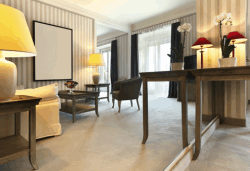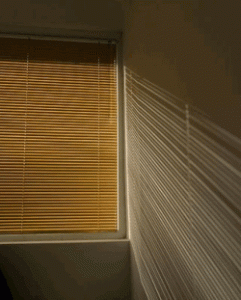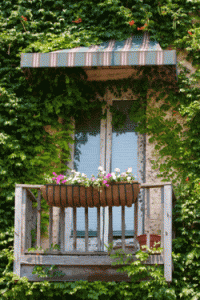Natural Lighting Principles: Making the Best Use of Sunlight
Natural lighting principles include using lighting phases and maximizing and manipulating light.
Natural lighting principles are usually given short shrift in most discussions of lighting design, despite the fact that sunlight is usually the brightest source of light in any room with a window. Instead, focus tends to be on fixtures, like lamps, ceiling lighting and wall lighting. As a result, most rooms tend to be well lit at night, when there is very little natural light, but tend to have their artificial lighting washed out during the day. This article will discuss how to best apply natural lighting principles, so that they properly integrate with your home lighting design.
Natural Light Principle #1: The Phases of Natural Light
Natural light has three distinct phases: direct sunlight, indirect sunlight and sunset/sunrise:
- Direct Sunlight: Direct sunlight provides slightly yellowish light that creates light objects using beams of light. It can cause glare, and can potentially damage objects in your room through ultraviolet radiation.
- Indirect Sunlight: Indirect sunlight is slightly bluish and creates only soft shadows. The light created by indirect sunlight is not very bright and therefore requires additional, artificial sources to create texture.
- Sunrise/Sunset: While sunrise and sunset are very short, the effects can be augmented by using orange and red highlights in your design, and by creating a transformative effect by including colors that include red such as purple, white and browns.
Natural Lighting Principle #2: Maximizing Natural Light
Natural light is precious. Windows are expensive to build, and, despite claims to the contrary, no natural light sources can really create its quality. As a result, you may use the following natural lighting principles to maximize your natural light as much as possible:

The mirror next to the window at the back of this room nearly doubles the amount of natural light that comes into this room.
- Interior glass: Using interior glass in walls and doors is far less expensive then installing them outside. By adding some glass inside of your house, natural light can spill over even into hallways that themselves lack any sources of natural light.
- Mirrors: Mirrors are excellent for reflecting natural light around your rooms without changing its light quality like a white wall would. In rooms that need more natural light, you can consider more reflective surfaces on your walls to increase the sunlight.
- Open-Concept: Of course, even more light will get through your home if the home is open-concept. Natural light will spill from room to room, granting natural light to as many spaces as your home allows. However, this can create the problem of a “cave”, which I will discuss in the next section.
Lighting Principle #3: Avoiding the “Cave”
The “cave” is a negative lighting effect that occurs when your room is too deep for your windows. Generally, if your room is wider than it is high, you will start to have something of a cave effect. Because we perceive contrast and not brightness, and because even indirect sunlight is very dark, portions of rooms that are not adequately lit by natural light can look very dim and give the appearance of a “cave”.
The “cave” is very hard to avoid without renovation. The most straight-forward way to avoid the cave effect is to install a skylight or light tube in the portion of the room that is not receiving natural light, but this can be expensive and is sometimes not possible.
The other approach is to compensate for the cave effect as much as possible. During the day, the unlit portion of the room should be lit fairly brightly, making that portion of the room seem far less dim. While this may seem like a waste of electricity, it is not. Because your irises are contracted, the unlit parts of your room actually appear less bright than they would at night. If those portions of the room are to be usable, they need to be brightly lit.
In addition, you should use as many light and reflective surfaces as possible. White surfaces reflect ninety-percent or more of the light shone on them, so having white walls can help the back of your room seem far less dark. In north-facing rooms, semi-reflective floors can also carry light through the room, though they should be avoided in any other rooms as they will create glare.
Natural Lighting Principle #4: Manipulating Natural Light
Natural light can be manipulated through the use of curtains, colored or frosted glass, awnings and shades:
- Curtains: Curtains can change the color of light. The light that shines through a curtain will pick up the color of the curtain itself. So, for example, if you have a room with a lot of cool, indirect sunlight but you want warmer colors, you can use curtains to warm the light.
- Colored and Frosted Glass: Colored glass functions similarly to curtains, changing the color of the light that goes through it, though more drastically. Frosted glass lessens the harsh beams of light and consequent shadows that come from direct sunlight.
- Awnings: In rooms that simply have too much direct sunlight, awnings outside of your home can cut back on the harshest of noonday beams. This lessens the lighting contrast in your rooms and preserves your interior decorations from UV light damage.
- Shades: Shades completely block light, and can create attractive (or unattractive) light objects using the beams of light that come from direct sunlight. They can also be used to cut down on direct sunlight during times of day when it would simply be overwhelming.
Putting It All Together
Natural lighting principles are just as important to your home lighting design as any other lighting principles. However, because sunlight changes phases and moves around your room, it can be difficult to manipulate and use properly:
- Natural light has distinct phases, the most important of which are direct and indirect sunlight.
- Natural light can be maximized using glass, mirrors and open-concept design.
- Natural light can lead to a “cave”-like effect where part of the room seems especially dark. This can be mitigated with solar tubes or with increased artificial light.
- Natural light can be manipulated using curtains, glass, awnings and shades of different kinds.
With these natural lighting principles in mind, you will be in a better position to make the best use of sunlight in your home lighting design.
More Natural Lighting Principles Articles:
Solar Tube Skylights: Remote Daylighting Made Easy
Solar tube skylights can provide daylight to areas of your home where a traditional skylight is not easily installed.

